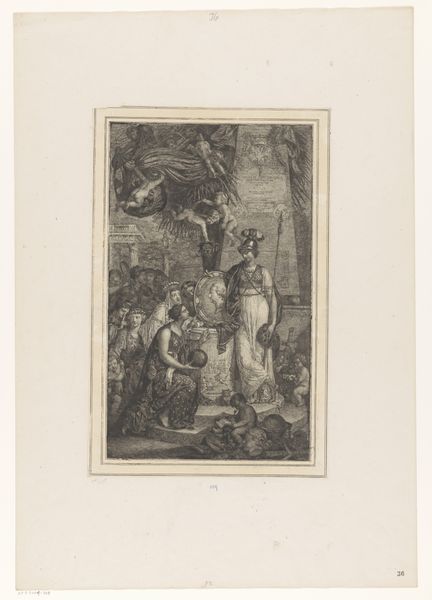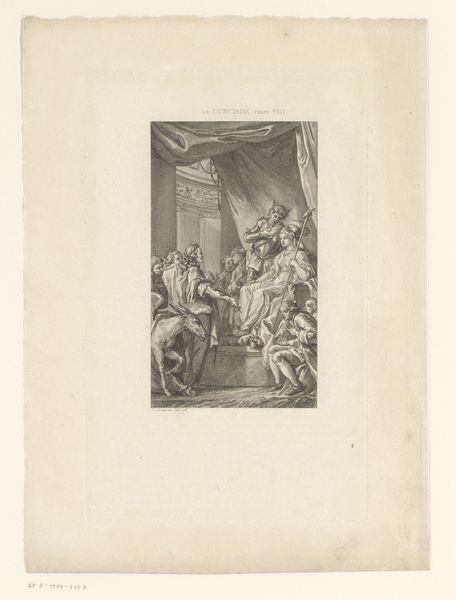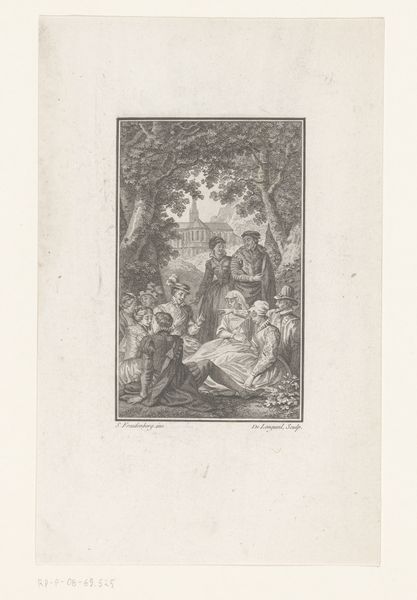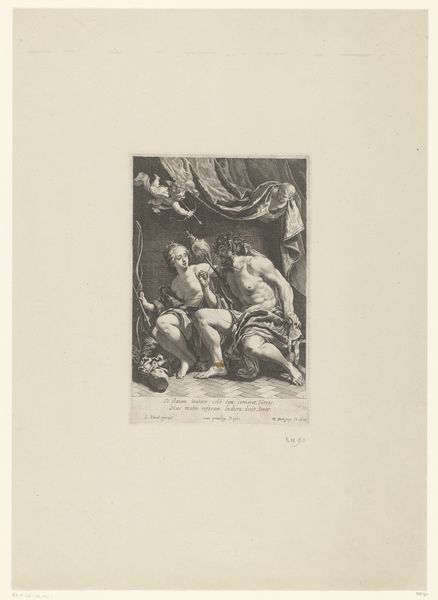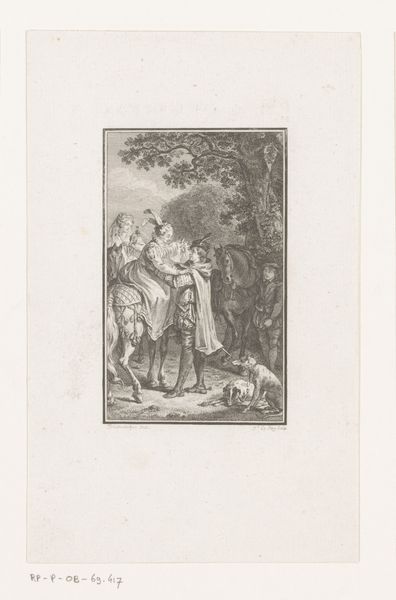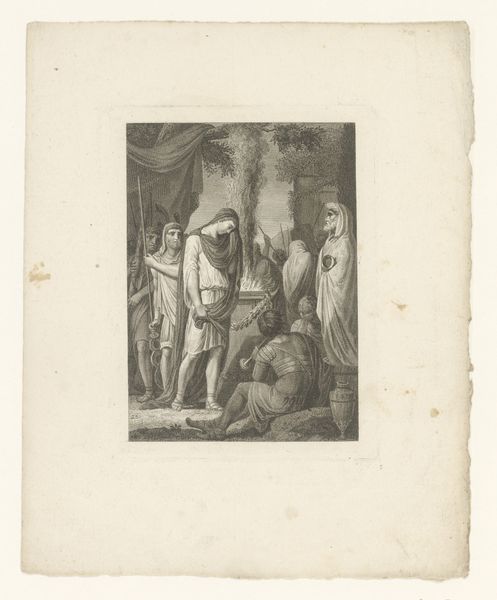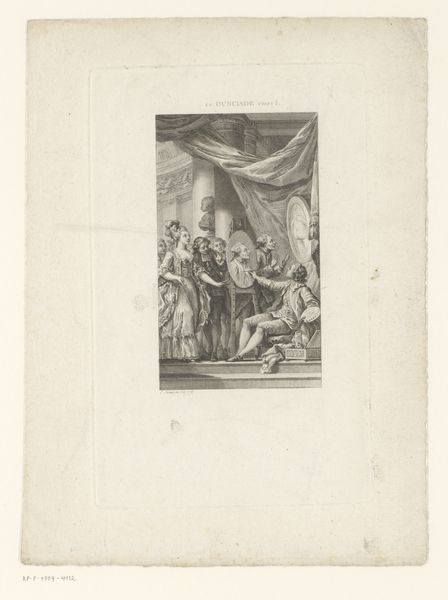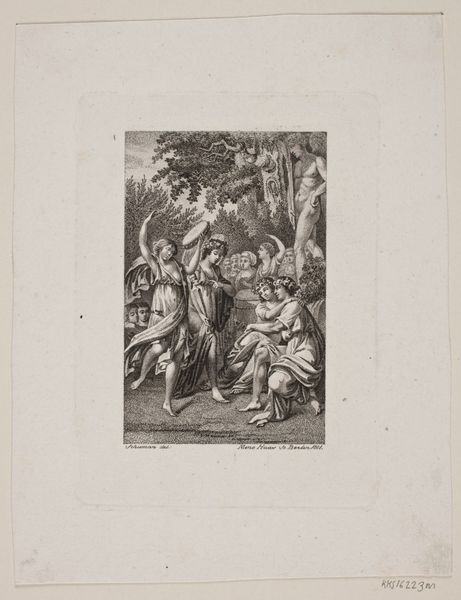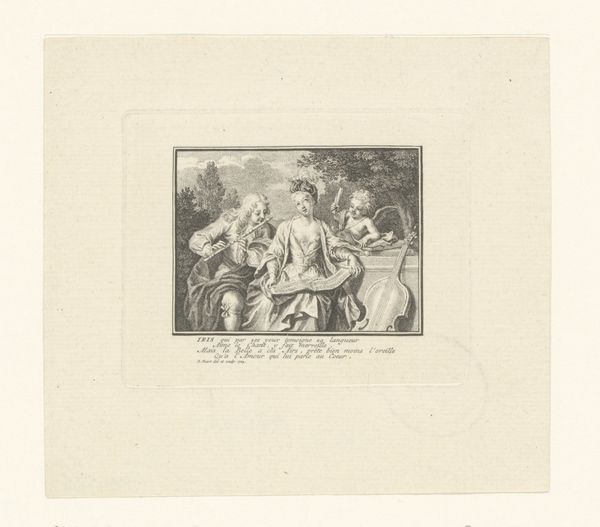
Dimensions: height 302 mm, width 217 mm
Copyright: Rijks Museum: Open Domain
Editor: This etching by William Unger, titled 'Maria met Kind door heiligen aanbeden,' and made sometime between 1847 and 1932, depicts the Virgin Mary and Christ Child adored by a group of figures. The baroque style creates a dramatic, reverent mood. What do you notice about the historical or cultural context of its display? Curator: What's striking is how Unger, in the 19th century, is engaging with Baroque themes. It suggests a deliberate revival or reinterpretation. This piece wasn't created during the height of the Baroque era, so we have to ask: What role did these historical reproductions play in the art world of the 19th century? How were audiences meant to understand and relate to images from a past era? Editor: So, it’s less about original religious devotion and more about artistic engagement with history? Curator: Exactly. Prints like these often circulated as educational tools, helping disseminate the style of the old masters. The museum display also frames the reception, doesn't it? It is less a spiritual object than a valuable element in the grand narrative of art history. How do you think its accessibility influenced public appreciation for Baroque art at the time? Editor: Interesting. I hadn’t considered the role of the museum in shaping our understanding. It prompts me to consider why certain eras or styles get emphasized. Curator: Precisely! Unger's print acts as a conduit, channeling Baroque imagery to a new audience within a new set of social and cultural expectations. Considering its position within a major collection invites critical discussion on its perceived value then and now. Editor: I see it so differently now – a window into not just the subject of the art, but the era that produced the copy. Thanks! Curator: A useful way to perceive these reproductions. We have managed to expand our knowledge through this image.
Comments
No comments
Be the first to comment and join the conversation on the ultimate creative platform.
